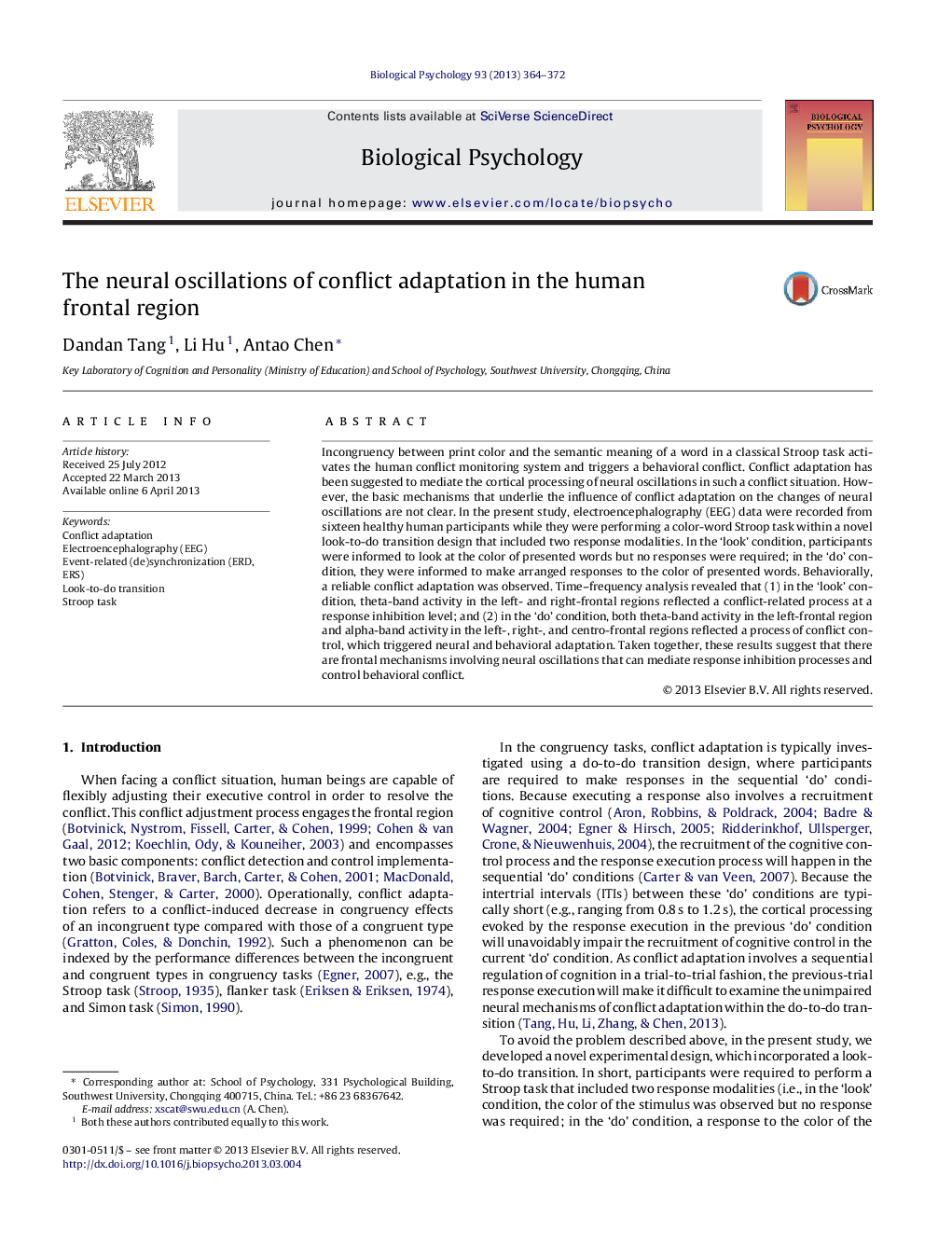| Article ID | Journal | Published Year | Pages | File Type |
|---|---|---|---|---|
| 10454228 | Biological Psychology | 2013 | 9 Pages |
Abstract
Incongruency between print color and the semantic meaning of a word in a classical Stroop task activates the human conflict monitoring system and triggers a behavioral conflict. Conflict adaptation has been suggested to mediate the cortical processing of neural oscillations in such a conflict situation. However, the basic mechanisms that underlie the influence of conflict adaptation on the changes of neural oscillations are not clear. In the present study, electroencephalography (EEG) data were recorded from sixteen healthy human participants while they were performing a color-word Stroop task within a novel look-to-do transition design that included two response modalities. In the 'look' condition, participants were informed to look at the color of presented words but no responses were required; in the 'do' condition, they were informed to make arranged responses to the color of presented words. Behaviorally, a reliable conflict adaptation was observed. Time-frequency analysis revealed that (1) in the 'look' condition, theta-band activity in the left- and right-frontal regions reflected a conflict-related process at a response inhibition level; and (2) in the 'do' condition, both theta-band activity in the left-frontal region and alpha-band activity in the left-, right-, and centro-frontal regions reflected a process of conflict control, which triggered neural and behavioral adaptation. Taken together, these results suggest that there are frontal mechanisms involving neural oscillations that can mediate response inhibition processes and control behavioral conflict.
Related Topics
Life Sciences
Neuroscience
Behavioral Neuroscience
Authors
Dandan Tang, Li Hu, Antao Chen,
